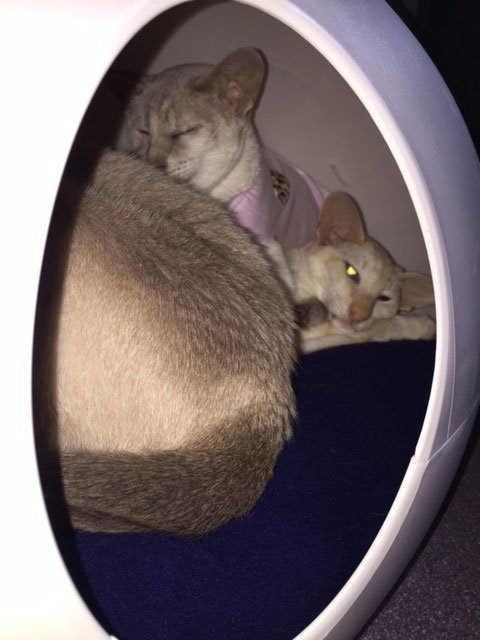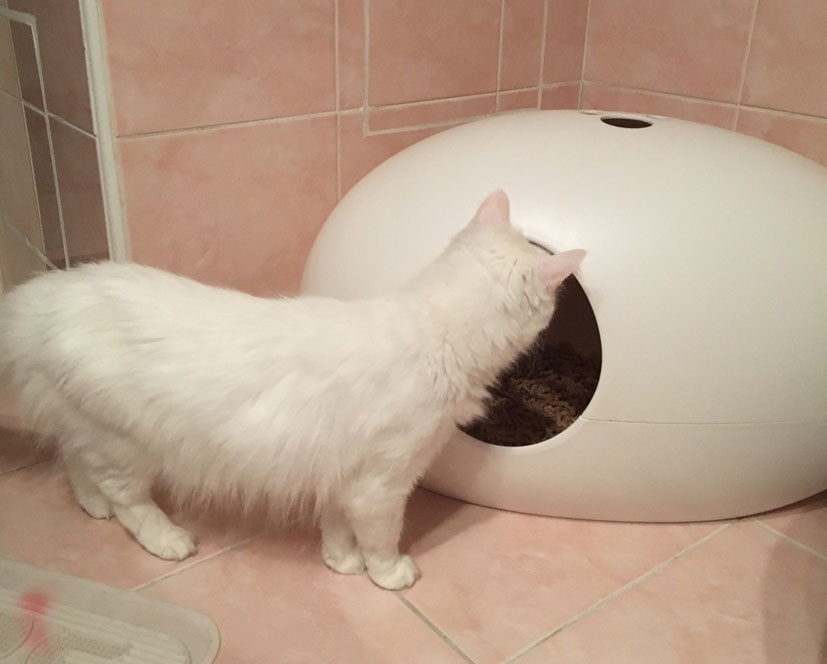As cats sleep up to 16 hours a day, the cat basket should be an ideal place for your cat to sleep and retreat. That’s why it’s important to pay attention to good features and criteria when buying. …
Divan cat cushion
Feedback from a satisfied customer
This customer letter, including the pictures, arrived in the mail today and made us extremely happy:
Dear pet.interiors team,
Thank you very much also on behalf of my 4 cats for the great divan cat cushion and the replacement cover. We were all very happy about it and tested everything straight away. As always, best quality and outstanding comfort…
Exactly the right thing for my rascals, as three of the four are already over 10 years old and are basically in advanced cat age. There’s a pinching and aching in your bones. And since a cat sleeps almost all day, it should also lie comfortably. My Lucky had a herniated disc a year ago and had to have surgery. She particularly enjoys the comfort of the cat bed.
The youngest cat, Mikesch II, also appreciates the advantages of the pillows. It has the most space as a “half portion”. She immediately noticed that it was particularly easy to sleep on.
Cat cushion Divan Uno indoors, with two of my cats.
The cat beds are also very visually appealing. Thanks to the wide range of colors, there is something to suit every taste and every home furnishing.
I placed the first two cat cushions outside in the garden and I have to say that they held up very well despite the wind and weather. The covers are very easy to wash, especially if you have covers to change :-). The sun has faded the color a bit, but it’s even and so it’s not noticeable. Since the cushions are actually only intended for the inside of the house, I used them for a slightly different purpose. But the cats loved the pillows. Especially on colder evenings, because the covers are cozy and warm.
I didn’t wash the inner pillow and its contents; to be honest, I didn’t dare do that because the washing machine was so full with the large pillows that I had to take the pillow out again. I was afraid that there would be no room for the water in the drum. But washing the covers is enough.
The Divan cat cushion is ideal for outdoor use.
I am very happy with your cat cushions, they look very nice and are well received. Even if they have a price, they are worth every euro! I am sure that I am making a valuable contribution to the health of my cats, because lying down in a way that is gentle on their joints is good for everyone. And if the cat is happy – then the person is happy too!
With this in mind, thank you again for the great service and the wonderful products. And all of this in the name of Kimba, Blacky, Lucky and Mikesch II. And in the name of the neighboring sparrows, who sometimes lie on it when no one is looking.
Best regards

What is a good cat basket?

Getting dogs and cats used to each other
Despite all the prejudices and common clichés, dogs and cats can become good friends. For them to live peacefully together under one roof, they must be carefully introduced to each other. …

Divan cat cushion
This customer letter, including the pictures, arrived in the mail today and we were extremely pleased …



















Recent Comments